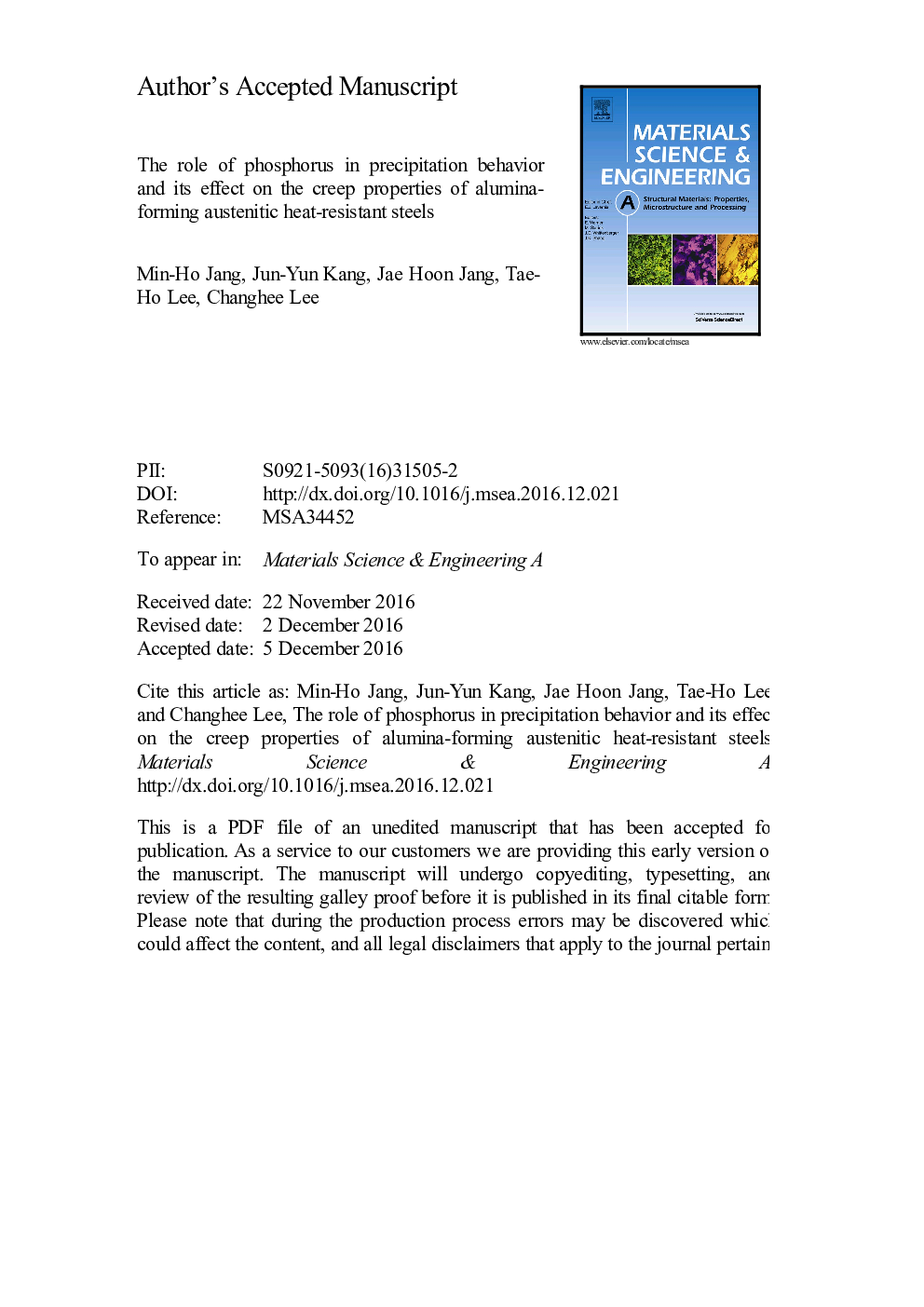| Article ID | Journal | Published Year | Pages | File Type |
|---|---|---|---|---|
| 5456283 | Materials Science and Engineering: A | 2017 | 31 Pages |
Abstract
The precipitation behavior and creep properties of lower phosphorus (P) alumina-forming austenitic (AFALP) heat-resistant steel were investigated and compared to those of AFA. The creep rupture time and hardness of the investigated steels were improved with the decrease of the P content. The TEM and EELS analyses confirmed an enhanced P concentration in the M23C6 precipitates along the grain boundaries. The P promoted the precipitation of M23C6 and also suppressed the precipitation of secondary NbC in the earlier stage of aging. The creep rupture time of AFA became shorter compared to AFALP due to the reduction in the fraction of secondary NbC which acts as a dominant strengthening phase during creep. The suppression of secondary NbC precipitation by P increased the Nb content in the austenite matrix and accelerated the precipitation of the Laves phase in the intermediate stage. However, the difference in Vickers hardness caused by Laves phase was not large in both alloys because the volume fraction of Laves phase strongly depended on the nominal content of Mo rather than Nb. The Vickers hardness at the earlier stage is determined by the precipitation of secondary NbC and the difference of the hardness maintained at the final stage. Thus, it is found that P degrades the creep rupture time and P is a detrimental element in terms of creep and precipitation hardening in AFA steels.
Related Topics
Physical Sciences and Engineering
Materials Science
Materials Science (General)
Authors
Min-Ho Jang, Jun-Yun Kang, Jae Hoon Jang, Tae-Ho Lee, Changhee Lee,
